100mm D-10
52-PT-412
Overview
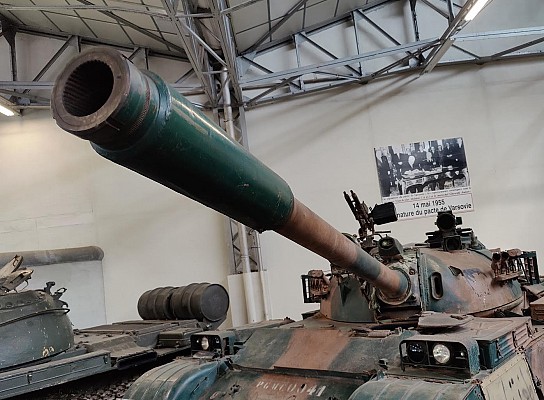
100mm Type 69
Close-up of a 100mm Type 69 gun on a Chinese produced former Iraqi Type 69-II tank on display at Musée des Blindés in France.
Source: Victor den Bak -
© Public domain
1947 for D-10T
Up to present day (elsewhere)
Soviet Union - No. 172 Perm plant
Czechoslovakia - ZTS
China
Description
Introduction
The D-10 is a World War 2 era cannon of Soviet origin. The D-10 was derived from the 100mm B-34 naval gun and has a similar ballistic trajectory. This design was adapted for use as a towed anti-tank gun, the BS-3, and as armament for the SU-100 self-propelled anti-tank gun during the later stages of World War 2. It was produced in the largest numbers as the D-10T for use on main battle tanks used from the early stages of the Cold War up to present day.
Design
The D-10 is a rifled 100mm gun with sliding breech block. It is manually loaded with single piece ammunition. The BS-3 has a muzzle brake, while the D-10S and D-10T variants for use on vehicles do not. Early models did not have a fume extractor. A fan was installed in the crew compartment, but was found inadequate. The vast majority of D-10T variant have a fume extractor near the muzzle. The D-10T was the first tank gun to be fitted with a stabilizer. Starting with a horizontal plane stabilizer in the D-10TG. This functioned but also proved lethal to the crew, having little influence on the moving breech section. The D-10T2S introduced a more capable two plane stabilizer and a turret basket proved part of the solution to make the system more practical. Upgrade programs applied in the 1980's retrofitted these cannon with a thermal sleeve.
Firepower
The D-10 fires a range of single piece ammunition. In World War 2 the ammunition consisted of the BR-412 APCBC series of projectiles and OF-412 high explosive fragmentation. In the early Cold War various APDS and HEAT rounds were introduced. Effective range is about 4 km for APCBC, up to 15 km for HE-frag in ballistic arc, 2 km for APDS and 4 km for HEAT. Rate of fire is about 5 to 6 rpm, but also depends on the layout and ergonomics of the vehicle. Various other nations and companies have introduced 100mm ammunition. A guided missile in the form of the 9K116 Bastion can also be launched if specific fire control equipment is present.
Platforms
In the later stages of World War 2 the BS-3 towed anti-tank gun and SU-100 tracked tank destroyer were introduced. As a tank gun the D-10T featured on several prototypes just after the war. The T-54 and T-55 series of main battle tanks were the main platform for this gun.
Users
The D-10 was first adopted by the USSR, which was the primary user until it was replaced by larger caliber guns on more modern tank designs. China produced large quantities of D-10 as the Type 59. Various other nations produced the D-10. With the sales of T-54 and T-55 series of tanks the D-10 was exported to many different nations. In various conflicts vehicles armed with the D-10 are still in use.
Variants
Soviet D-10 variants
Foreign D-10 variants
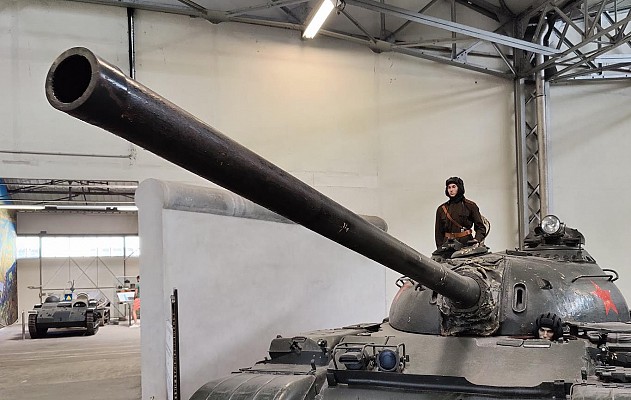
100mm D-10T
Close-up of a 100mm D-10T gun on a T-54 tank on display at Musée des Blindés in France.
Source: Victor den Bak -
© Public domain
Details
Platforms
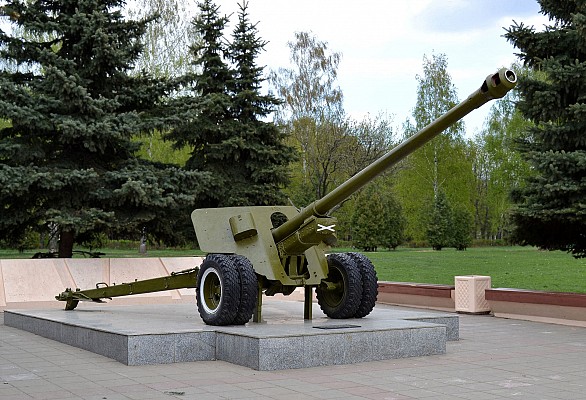
100mm BS-3
Towed anti-tank gun, first introduced in 1944. Features a double baffle muzzle brake. GRAU index is 52-P-412.
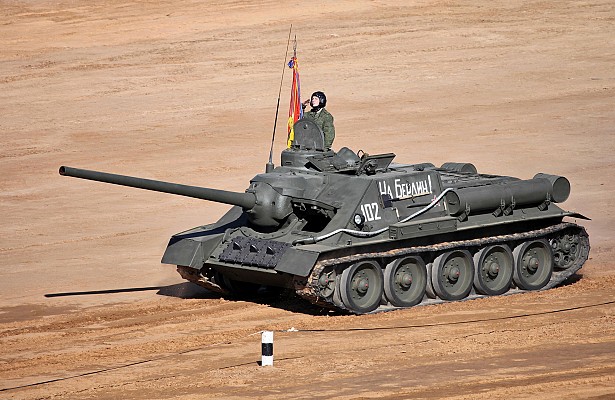
SU-100
Self-propelled anti-tank gun, first introduced in 1944. Casemate structure on T-34 medium tank chassis. Features a D-10S gun without muzzle brake or bore evacuator.
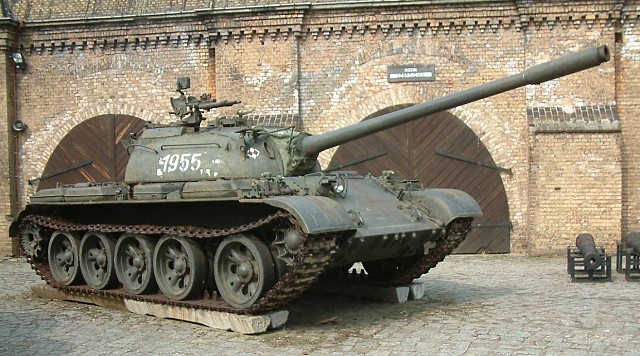
T-55
First production model of the T-55 was already fitted with the D-10T2S gun, but without thermal sleeve. The thermal sleeve was retrofitted later on, often during upgrade to the T-55M / AM standard
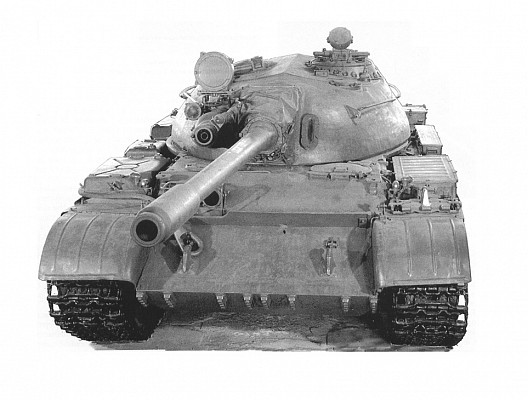
TO-55
The TO-55 is a flamethrower tank derived from the T-55. It retains a fully functional D-10T2S main gun.
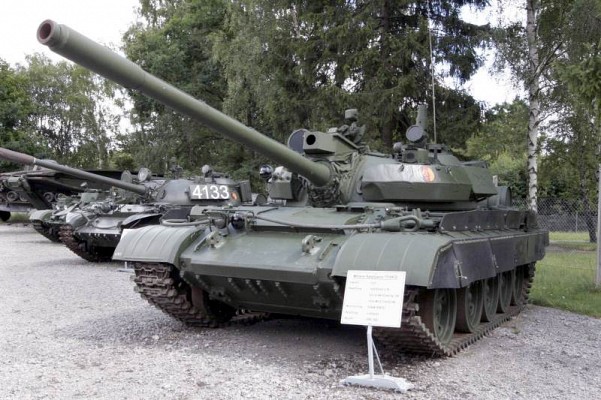
T-55AM
Deep modernization of the T-55 fitted with updated mobility, protection and fire control systems. Fitted with the D-10T2S main gun with thermal sleeve, two axis stabilizer and laser range finder.
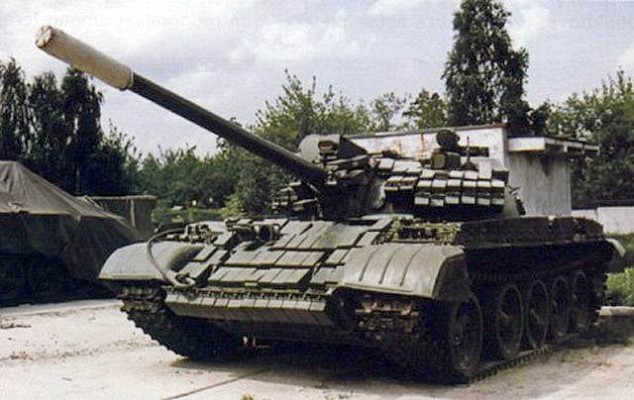
T-55AMV
Variant of the T-55AM fitted with Kontakt-1 explosive reactive armor. Fitted with the D-10T2S main gun.
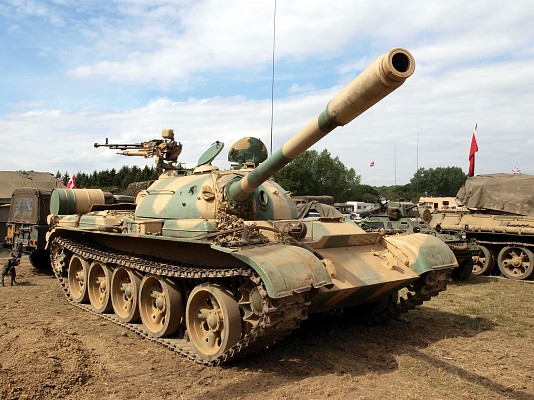
Type 59
Chinese main battle tank derived from the T-54. Armed with a 100mm Type 59 rifled gun with horizontal stabilization in its original form. The updated Type 59-I features a Type 69 main gun with two axis stabilizer. Later Type 59 variants switched to local copies of the British 105mm L7 rifled gun firing NATO spec ammunition.
Related articles
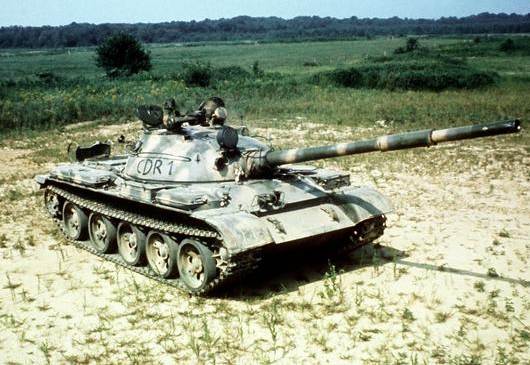
115mm U-5TS
The 115mm U-5TS smoothbore gun was developed for the T-62. These guns may look similar at a glance. The fume extractor is the easiest way to distinguish D-10T from U-5TS.